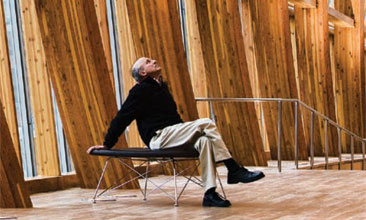As a boy sitting in his 10-foot by 10-foot shanty in Kibera, Kenya, one of Africa’s largest slums Kennedy Odede never could have dreamed where his life would take him. But in the past five years, the 27-year-old Odede managed to land himself a four-year scholarship at Wesleyan University in Connecticut, and co-found (and is the CEO of) Shining Hope for Communities (SHOFCO), a nonprofit devoted to combating gender inequality and extreme poverty in Kibera. Oh, and he also shared the podium with Bill Clinton and Sean Penn at the Clinton Global Initiative University’s closing Plenary Session, a forum that brings together young leaders from across the globe to share, discuss, and formulate action on global issues, and was recently invited to become a CGI member, an honor given to heads of state, Nobel Prize winners, and business titans.
Odede’s rise from painfully humble beginnings to running an organization that, in the past two years, has improved the lives of over 11,000 people is an impressive accomplishment—made even more remarkable because prior to attending Wesleyan, Odede had no formal education. Like many stories of triumph, this one starts with a son’s love for his mother. “My mother [Jane] is an incredibly strong woman who loves her children very much,” Odede says. “She is an innovative thinker who imagined the possibility of a promising future.” The eldest of eight children, Odede began selling peanuts on the streets at age 7 to help feed his family. Kibera, roughly the size of New York’s Central Park, is home to over 1.5 million people. There are no roads, schools, health care, clean water, or sanitation. In fact, one in every five children does not live to see their fifth birthday, and 66 percent of girls trade sex for food, many as early as age 6.


![Peaches [Adam Cohen photo]](https://www.renagodfrey.com/nwp/wp-content/uploads/2012/12/pchs.jpg)
